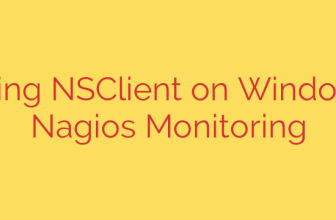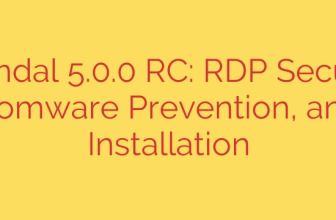
Fortifying Your Cloud: How AI in Google Drive Is Stopping Ransomware Before It Strikes
In today’s digital landscape, the cloud is the central hub for collaboration and data storage. But this convenience also creates a prime target for cybercriminals, with ransomware remaining one of the most devastating threats to businesses and individuals alike. An attack that starts on a single endpoint can quickly spread through shared cloud drives, encrypting critical files and bringing productivity to a grinding halt.
Fortunately, the defense against these attacks is evolving. A sophisticated, AI-powered defense mechanism is now integrated directly into Google Drive, working silently in the background to neutralize ransomware threats before they can ever cause damage. This represents a major leap forward from traditional, reactive security measures.
The Problem with Traditional Ransomware Detection
For years, cybersecurity has relied heavily on signature-based detection. This method works by identifying the known digital “fingerprints” of malicious software. While effective against known viruses, it has a critical weakness: it’s powerless against zero-day threats—brand-new ransomware variants that have never been seen before.
Cybercriminals constantly create new strains of ransomware to evade these signature databases, leaving organizations vulnerable during the crucial window between an attack’s launch and the development of a patch. In a cloud environment where files sync instantly, this delay can be catastrophic.
A Proactive Shield: How AI Changes the Game
Instead of waiting to identify a known threat, Google Drive’s new security model uses a sophisticated machine-learning algorithm to proactively analyze files. This model was trained on a massive dataset containing billions of legitimate and malicious files, allowing it to understand the subtle characteristics that distinguish ransomware.
Here’s how it provides a powerful layer of protection:
- Pre-emptive Scanning: The AI model scans files upon upload, before they are ever shared or downloaded by a user. This is a critical distinction—it intercepts the threat at the point of entry, rather than after it has reached an endpoint.
- Behavioral Analysis: The AI doesn’t just look for known signatures. It analyzes a file’s structure and patterns, such as file entropy (a measure of randomness). Ransomware fundamentally works by encrypting files, a process that dramatically increases a file’s randomness. The AI is trained to recognize these tell-tale signs of malicious encryption.
- Zero-Day Detection: Because this model identifies the behavior of ransomware rather than a specific piece of code, it is highly effective at identifying and blocking entirely new, previously unknown ransomware strains.
This advanced system has already proven its effectiveness, successfully blocking over 100 million ransomware attempts from reaching users. By neutralizing threats at the source, it dramatically reduces the “blast radius” of a potential attack, ensuring that a single infected file doesn’t compromise an entire organization’s data.
Your Multi-Layered Security Strategy
While this built-in AI protection is a powerful safeguard, true cyber resilience comes from a defense-in-depth approach. No single tool is a silver bullet. To ensure your organization is fully protected, combine this cloud-native security with other essential best practices.
Actionable Security Tips for Your Business:
- Prioritize User Education: The most common entry point for ransomware is still a phishing email. Continuously train your team to recognize and report suspicious links, attachments, and requests. A vigilant user is your first line of defense.
- Strengthen Endpoint Security: Ensure all devices (laptops, desktops, mobile phones) that connect to your cloud storage are protected with modern, high-quality antivirus and endpoint detection and response (EDR) solutions.
- Enforce the Principle of Least Privilege: Not every user needs access to every file. Implement strict access controls to ensure employees can only view and edit the files absolutely necessary for their roles. This limits the potential damage if an account is compromised.
- Maintain Immutable Backups: Regular backups are your ultimate safety net. Use a backup solution that is isolated from your primary network to ensure you can restore your data quickly and completely in a worst-case scenario.
The fight against ransomware is a continuous battle, but with the integration of powerful AI directly into platforms like Google Drive, the odds are shifting in favor of the defenders. By leveraging these advanced, built-in protections and maintaining strong security hygiene across your organization, you can confidently protect your most valuable digital assets.
Source: https://cloud.google.com/blog/products/identity-security/cloud-ciso-perspectives-disrupt-ransomware-ai-google-drive/








